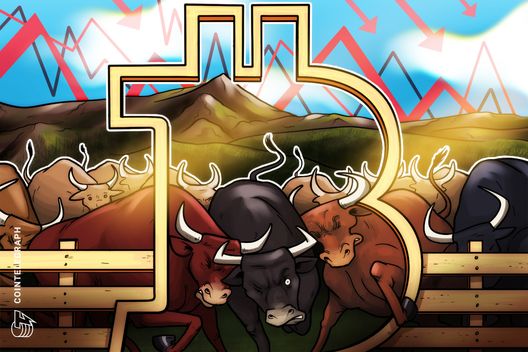Renowned economist Raoul Pal has identified the soaring global money supply as the main factor influencing Bitcoin‘s price rise over recent years. According to Pal, this escalation in M2 money supply has been critical, overshadowing other narratives which he describes as mere background noise. Anthony Pompliano, another prominent figure in the crypto space, suggests Bitcoin might serve as the “new bonds,” offering a fresh perspective on the cryptocurrency’s role in global finance.
How Does the Global Money Supply Growth Affect Bitcoin?
Raoul Pal, co-founder of Real Vision and a macroeconomic specialist, recently took to his official X account to share a notable graph. This visual illustrates the close relationship between Bitcoin’s pricing trajectory and the increase in global money supply over a two-year period. The rapid infusion of significant liquidity into the economy since 2023 has propelled the M2 supply, a trend mirrored by Bitcoin’s climbing values.
Pal’s examination attributes approximately 89% of Bitcoin’s pricing behaviors to this single factor. In his words,
“By definition, almost all ‘news’ and ‘narratives’ are noise.”
He also asserts that Bitcoin’s rise contributes to the weakening of the US dollar.
Recent geopolitical tensions have resulted in Bitcoin’s volatile behavior, with its value dropping sharply by over 4% as the weekend approached. The cryptocurrency declined from $108,000 to a region around $103,000 but has since partially rebounded, crossing the $105,000 mark yet continuing its unstable trends.
Is Bitcoin the New Bond Market?
Prominent Bitcoin supporter Anthony Pompliano argued in a recent post that Bitcoin is evolving into “the new bonds.” He noted,
“Once this concept is accepted, everything begins to make much more sense.”
This viewpoint aligns with a “BitBonds” concept outlined in an April Forbes article, suggesting a potential new financial pathway.
The Forbes piece proposes that Bitcoin could underpin US Treasury bonds. This integration could potentially lower interest costs since part of the bond income is linked to Bitcoin’s finite supply of 21 million units.
The article connects this notion to a strategic shift observed during the Trump administration. Ex-President Donald Trump identified Bitcoin as a reserve asset, decreeing the establishment of a Strategic Bitcoin Reserve. This reserve includes around 200,000 BTC obtained through seizures, notably from illicit operations like Silk Road.
Key takeaways from the analysis suggest a profound insight into Bitcoin’s recent market behavior:
- Global money supply (M2) largely dictates Bitcoin’s value trends.
- Geopolitical events continue to significantly impact market movements.
- The concept of “BitBonds” could redefine Bitcoin’s financial utility.
- The strategic reserve held by the US government may influence future policies.
These insights offer a nuanced understanding of Bitcoin’s potential trajectory and its rising significance in economic discussions globally. Both Pal’s and Pompliano’s perspectives highlight the dynamic and evolving nature of Bitcoin in today’s financial ecosystem.
Disclaimer: The information contained in this article does not constitute investment advice. Investors should be aware that cryptocurrencies carry high volatility and therefore risk, and should conduct their own research.
















 English (US)
English (US)